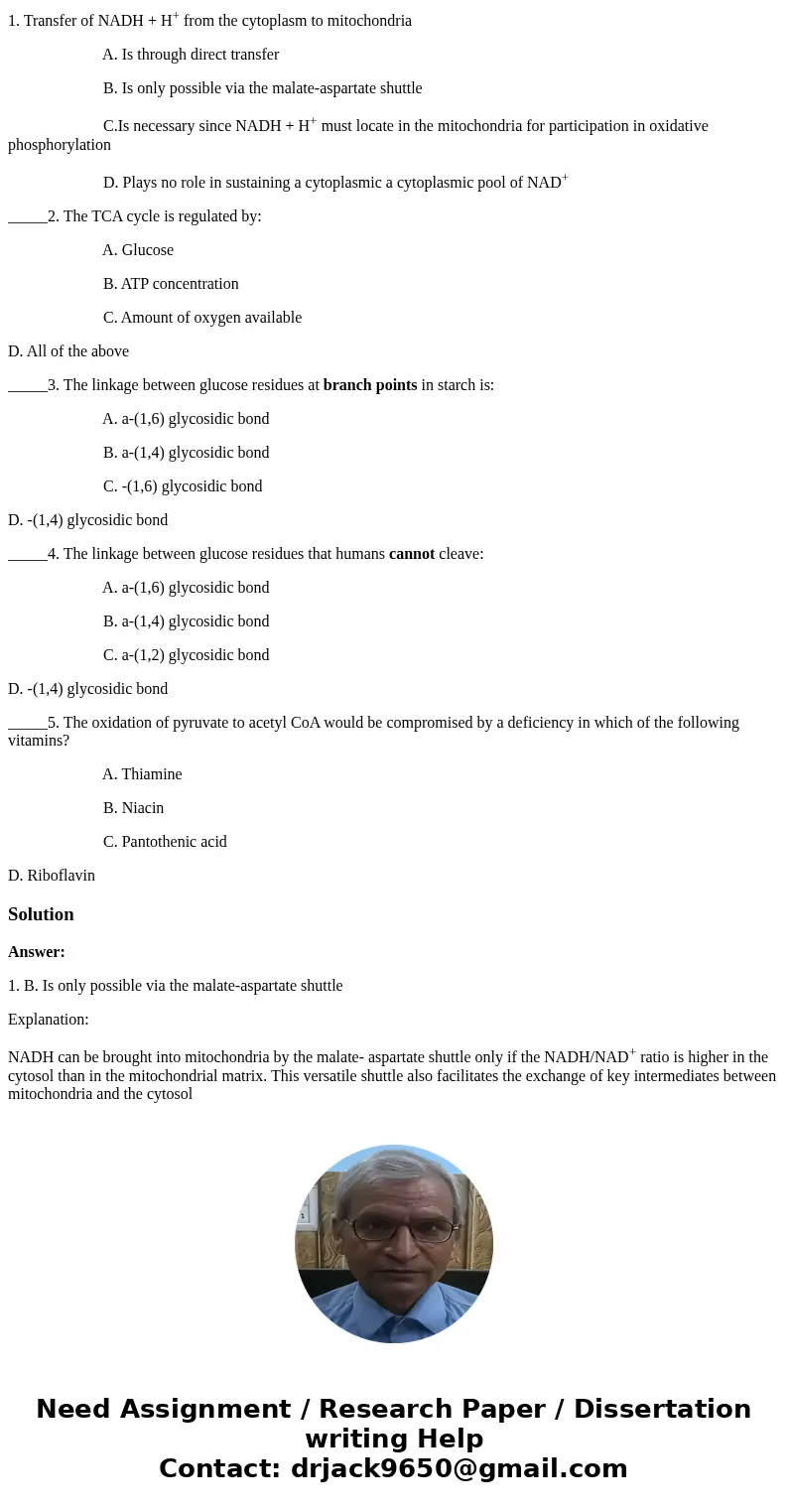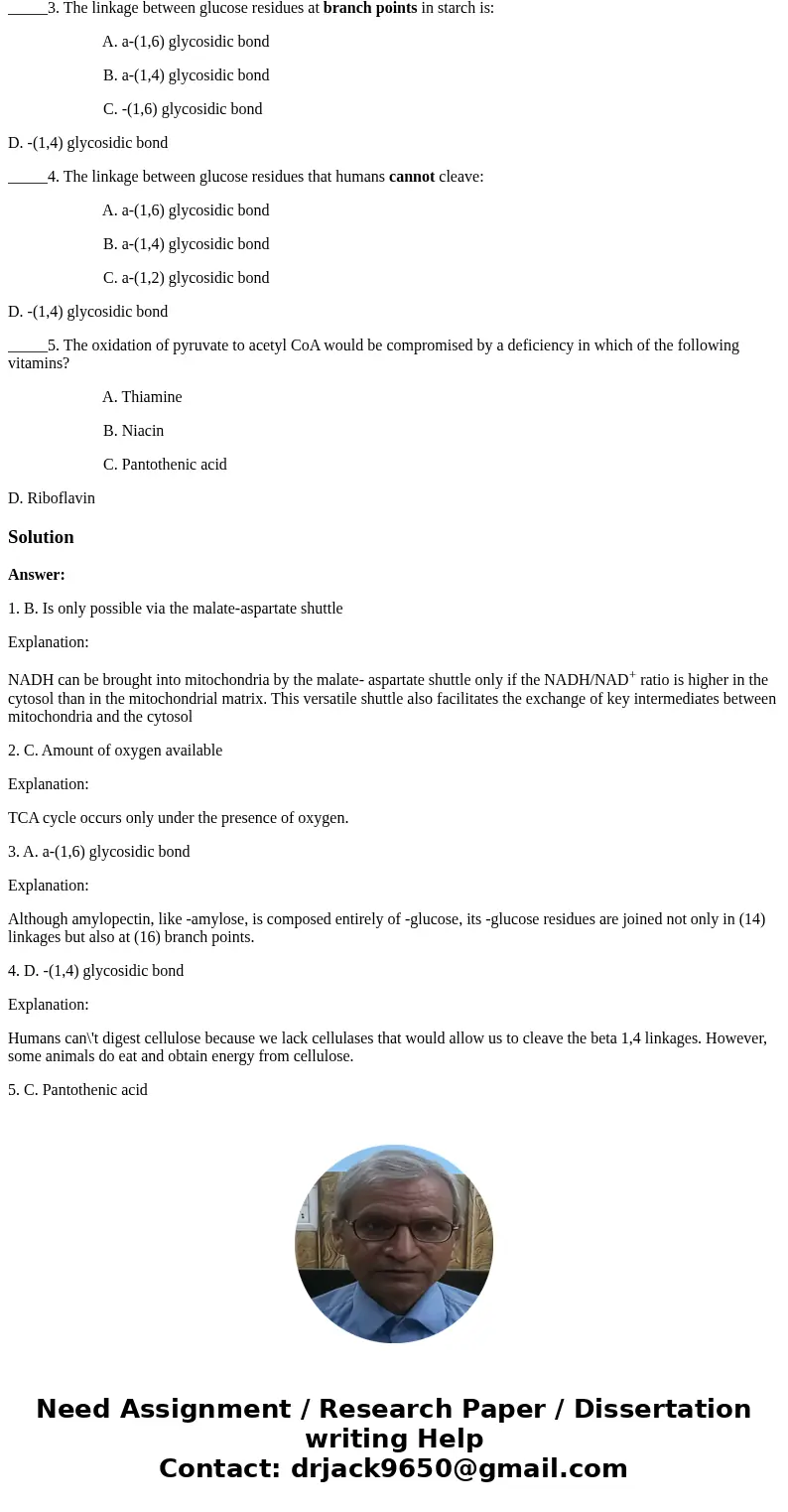1 Transfer of NADH H from the cytoplasm to mitochondria A I
1. Transfer of NADH + H+ from the cytoplasm to mitochondria
A. Is through direct transfer
B. Is only possible via the malate-aspartate shuttle
C.Is necessary since NADH + H+ must locate in the mitochondria for participation in oxidative phosphorylation
D. Plays no role in sustaining a cytoplasmic a cytoplasmic pool of NAD+
_____2. The TCA cycle is regulated by:
A. Glucose
B. ATP concentration
C. Amount of oxygen available
D. All of the above
_____3. The linkage between glucose residues at branch points in starch is:
A. a-(1,6) glycosidic bond
B. a-(1,4) glycosidic bond
C. -(1,6) glycosidic bond
D. -(1,4) glycosidic bond
_____4. The linkage between glucose residues that humans cannot cleave:
A. a-(1,6) glycosidic bond
B. a-(1,4) glycosidic bond
C. a-(1,2) glycosidic bond
D. -(1,4) glycosidic bond
_____5. The oxidation of pyruvate to acetyl CoA would be compromised by a deficiency in which of the following vitamins?
A. Thiamine
B. Niacin
C. Pantothenic acid
D. Riboflavin
Solution
Answer:
1. B. Is only possible via the malate-aspartate shuttle
Explanation:
NADH can be brought into mitochondria by the malate- aspartate shuttle only if the NADH/NAD+ ratio is higher in the cytosol than in the mitochondrial matrix. This versatile shuttle also facilitates the exchange of key intermediates between mitochondria and the cytosol
2. C. Amount of oxygen available
Explanation:
TCA cycle occurs only under the presence of oxygen.
3. A. a-(1,6) glycosidic bond
Explanation:
Although amylopectin, like -amylose, is composed entirely of -glucose, its -glucose residues are joined not only in (14) linkages but also at (16) branch points.
4. D. -(1,4) glycosidic bond
Explanation:
Humans can\'t digest cellulose because we lack cellulases that would allow us to cleave the beta 1,4 linkages. However, some animals do eat and obtain energy from cellulose.
5. C. Pantothenic acid


 Homework Sourse
Homework Sourse